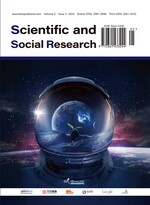Abstract
The fungus bran is the waste of the fruiting body of edible fungi, which is rich in a variety of protein and fiber, amino acids, polysaccharides, enzymes, and other nutrients, and has high reuse value. In this study, the fungus bran produced by desert Tremella was used as the raw material to prepare the fungus bran which could provide plant nutrients and water retention function. After 7 days of experiments, it was found that the sand fixation material had good water retention performance and significantly increased the aggregate performance of the sand. The results of FTIR and SEM analysis showed that the sand chaff was involved in the agglomeration process of sand, and the sand and the chaff were well combined, with a better spatial network structure and surface morphology. Therefore, it is a great prospect to explore the reuse of solid waste of fungal bran in desert afforestation.
References
Qiang C, Guang L, Zhenhua Z, et al., 2023, Experimental Investigation on the Strength and Microscopic Properties of Cement-Stabilized Aeolian Sand. Buildings, 13(2): 395.
Amit R, Enzel Y, Mushkin A, et al., 2014, Linking Coarse Silt Production in Asian Sand Deserts and Quaternary Accretion of the Chinese Loess Plateau. Geology, 42(1): 23–26.
Park SS, Park JW, Yoon KB, et al., 2022, Evaluation of Compressive Strength and Thermal Conductivity of Sand Stabilized with Epoxy Emulsion and Polymer Solution. Polymers, 14(10): 1964.
Li X, Wu Q, Wang Y, et al., 2024, UHPM Dominance in Driving the Formation of Petroleum-contaminated Soil Aggregate, the Bacterial Communities Succession, and Phytoremediation. Journal of Hazardous Materials, 471(1): 134322.
Jiang K, Jia NY, Yang Y, et al., 2024, Effects of Land Use Change on Soil Aggregate Stability and Soil Aggregate Organic Carbon in Karst Area of Southwest China. Huanjing Kexue, 45(5): 2840–2847.
Sheng X, Chen S, Zhao Z, et al., 2024, Metal Element-based Adsorbents for Phosphorus Capture: Chaperone Effect, Performance, and Mechanism. Chemosphere, 352(1): 141350.
Khan ZM, Abuelseoud A, Lange K, et al., 2024, Correlation between Laboratory and Outdoor Soiling Experiments with Anti-soiling Coatings. Solar Energy Materials and Solar Cells, 269(1): 112751.
Zang X, Yun T, Wang L, et al., 2024, Water-Retaining Agent as a Sustainable Agricultural Technique to Enhance Mango (Mangifera indica L.) Productivity in Tropical Soils. Agronomy, 14(3): 235–236.
Nabil A, Maryam M, Ahmed MA, et al., 2023, Experimental Analysis of Anti-Reflective Coating Performance in Desert Climate: Yield Analysis, Soiling Impact, and Cleaning Durability Evaluation. Sustainable Energy Technologies and Assessments, 60(1): 34–38.
Avazbek T, Gulom Y, Kamoliddin A, et al., 2021, Chemical and Biogeochemical Features of Desert Soils of the Central Fergana. Agriculture, 67(1): 16–28.
Doroteja M, Anica H, 2023, Does the Education Level of Consumers Influence Their Recycling and Environmental Protection Attitudes? Evidence From Croatia. Our Economy, 69(4): 51–61.
Yulin Z, Yi D, Xutian C, et al., 2023, Combined Effects of Planting Patterns and Mowing Time on Different Organs and Soil Stoichiometry of Cyperus esculentus in Desert Oasis Transition Zone. Journal of Plant Physiology, 287(1): 154033.
Chen QW, Lai X, Gu HH, et al., 2023, Evaluating Environmental Impacts of Different Hydrometallurgical Recycling Technologies of the Retired Nickel-manganese-cobalt Batteries from Electric Vehicles in China. Separation and Purification Technology, 31(1): 11345–11346.
Al-Burki ARF, Mohsin AH, Sarheed FA, 2021, Season Response of Bread Wheat Cultivars (Triticum Aestivum L.) to Different Planting Dates Under Samawa Desert Condition. IOP Conference Series: Earth and Environmental Science, 923(1): 25685–25687.
Shaheed R, Mohtar WMHW, El-Shafie A, 2017, Ensuring Water Security by Utilizing Roof-harvested Rainwater and Lake Water Treated with a Low-cost Integrated Adsorption-filtration System. Water Science and Engineering, 10(2): 115–124.
Akavia E, Beharav A, Wasser SP, et al., 2008, Disposal of Agro-industrial By-products by Organic Cultivation of the Culinary and Medicinal Mushroom Hypsizygus marmoreus. Waste Management, 2008(5): 67–68.
Mori K, Kobayashi C, Tomita T, et al., 2008, Antiatherosclerotic Effect of the Edible Mushrooms Pleurotus eryngii (Eringi), Grifola frondosa (Maitake), and Hypsizygus marmoreus (Bunashimeji) in Apolipoprotein E-deficient Mice. Nutrition Research, 2008(5): 55–56.
Simair A, Dahot, M, Mangio M, et al., 2008, Xylanase Production by White-rot Fungus Pleurotus eryngii Grown on Optimized Culture Conditions. Journal of Biotechnology, 2008(2): 134–135.
Carbonero ER, Gracher AH, Rosa MC, et al., 2007, Unusual Partially 3-O-methylated ?-galactan from Mushrooms of the Genus Pleurotus. Phytochemistry, 69(1): 156–157.
Dubost N, Ou B, Beelman R, 2007, Quantification of Polyphenols and Ergothioneine in Cultivated Mushrooms and Correlation to Total Antioxidant Capacity. Food Chemistry, 2007(2): 234–235.
